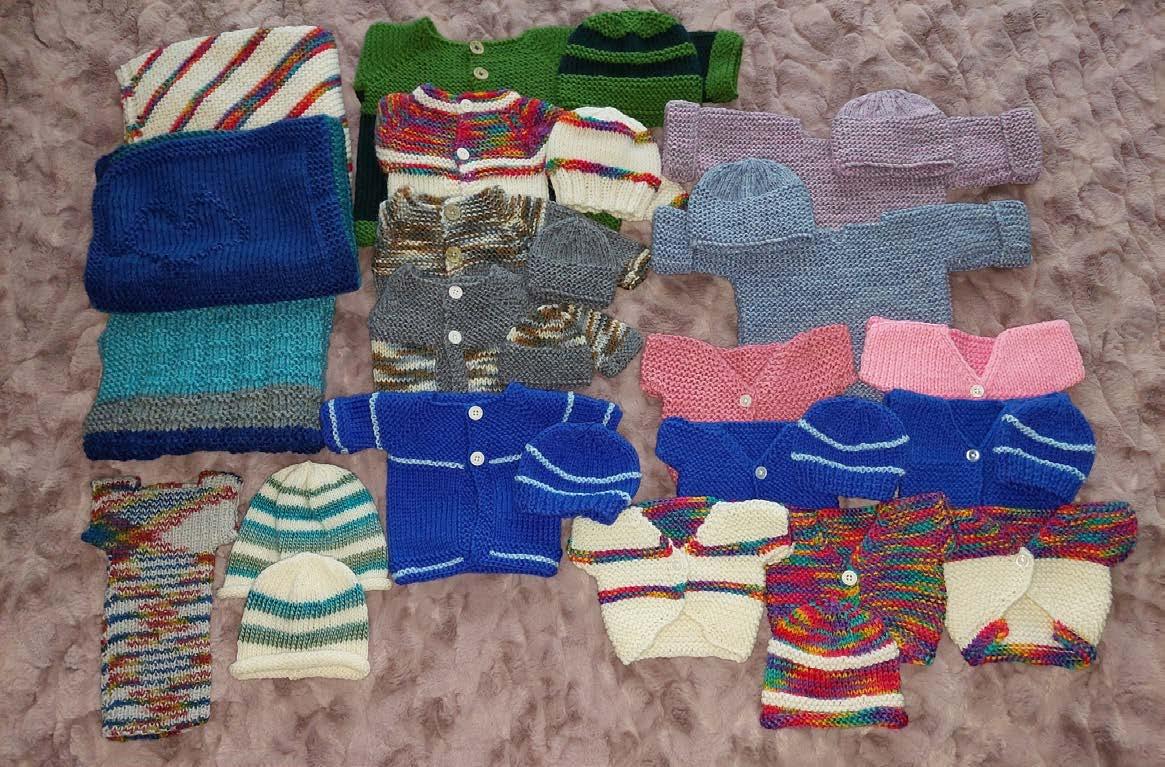
3 minute read
› Te Reo Māori Akoranga
This is week five of the Pānui te reo Māori akoranga (lessons). Have you been following these and incorporating more te reo into your everyday conversations? There’s something for everyone in these short lessons and if you haven’t given it a go yet, I recommend that you go back and look at the previous akoranga. Karawhiua! If you don’t know what that means, take a look at today’s lesson on kīwaha (idioms) on page 9.
Have a great week. Kia pai tō koutou rā
Advertisement
Peter Bramley Interim Regional Director Te Wai Pounamu Interim District Director Waitaha Canterbury and Te Tai o Poutini West Coast
A generous gift to NICU babies
In 1992, Suzanne Stevenson gave birth at 30 weeks to a premature baby girl in Christchurch Hospital. She and her little one were cared for by the doctors and nurses at the time and her daughter has recently celebrated her 30th birthday. To ‘pay it forward’ and acknowledge the ongoing work that the staff do in the Neonatal Intensive Care Unit (NICU), Suzanne recently donated some beautiful items she knitted for the babies; thirty knitted garments donated to mark the 30 years since her daughter was born at 30 weeks.
The families with babies in NICU who receive these gifts will be so grateful. Many thanks to Suzanne for her generosity.

The knitted items donated to NICU by Suzanne Stevenson

QUIZ – New Zealand birds
New Zealand has an extensive array of native bird life including the highest concentration of flightless birds in the world. How much do you know about our feathered friends?
1. What has a genetic study of Moa fossils identified as the primary cause of their extinction? a. Volcanic eruptions b. Climate change c. Starvation d. Humans
2. How many living species of kiwi are there?
a. One b. Three c. Five d. Seven
3. What New Zealand native is considered to be the most intelligent bird in the world?
a. Pukeko b. Kea c. Tui d. Kākā
4.Which ‘fact’ is true of the kākāpō?
a. They can climb trees b. They can live to be more than 90 years old c. They’re nocturnal d. All of the above
5.Which of the following native birds can fly?
a. Pīwakawaka b. Kororā c. Auckland Island Teal d. All of them
6. What is unusual about the hihi (stitchbird)?
a. They cannot fly for more than one minute at a time b. Their eggs weigh more than half their body weight c. They are the only bird that sometimes mates faceto-face d. Originally flightless, they evolved to fly around 250 years ago 7. True or false, kiwi have nostrils at the end of their long beaks?
a. True b. False
8.The tiny mohua (yellowhead) appears on a
New Zealand bank note. Who is the human on the other side of that money?
a. Kate Sheppard b. Sir Ernest Rutherford c. Sir Edmund Hillary d. Sir Āpirana Ngata
9. Every year, New Zealand Forest and Bird run a public vote for people to choose the ‘bird of the year’. What was special about the 2021 winner?
a. It was extinct (moa) b. It also won in 2020 (kākāpō) c. It was a bat (long-tailed bat) d. It was an introduced species (magpie)
10. How many species of bird are native to
New Zealand?
a. More than 200 b. More than 500 c. More than 700 d. More than 1000
Check your answers on page 24.


